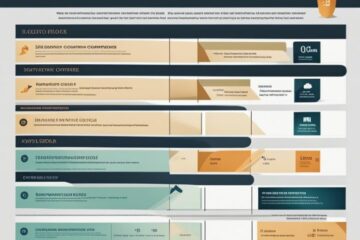With the ever-evolving digital landscape, businesses are constantly seeking ways to enhance their operations efficiently and effectively. Service scheduling software has emerged as a crucial tool in streamlining business processes, especially for companies offering services that require appointments or bookings. By utilizing this technology, businesses can optimize their time management, improve customer satisfaction, and ultimately boost their bottom line.
Service scheduling software offers a wide range of features, including automated appointment reminders, real-time scheduling updates, and integrated customer databases. This allows businesses to eliminate scheduling conflicts, reduce no-shows, and provide seamless communication with their customers. Additionally, by centralizing all scheduling operations in one platform, businesses can enhance their overall efficiency and ensure a consistent customer experience across all touchpoints.
By embracing service scheduling software, businesses can modernize their operations and stay ahead of the competition in today’s fast-paced market. Whether you run a salon, a medical practice, or any other service-oriented business, investing in this technology can revolutionize your workflow and drive success. Take the first step towards optimizing your business operations by exploring the benefits of service scheduling software today.
Key Takeaways:
- Efficiency: Service scheduling software helps streamline operations by automating scheduling, reducing double bookings, and maximizing resource utilization.
- Improved Customer Service: By offering real-time scheduling, reminders, and updates, businesses can enhance customer satisfaction and experience.
- Optimized Workforce: With the ability to assign tasks based on availability, skills, and location, service scheduling software helps in optimizing workforce management.
- Enhanced Communication: Keeping all stakeholders informed about schedules, changes, and updates leads to better coordination and communication within the business.
- Increased Productivity: By reducing manual scheduling tasks, employees can focus on core activities, leading to increased productivity and efficiency.
- Analytics and Insights: Service scheduling software provides valuable data and analytics to track performance, identify trends, and make informed decisions for business growth.
- Cost Savings: By eliminating scheduling errors, reducing overhead costs, and improving resource allocation, businesses can achieve cost savings and improved profitability.
Understanding Service Scheduling Software
Assuming you are looking to streamline your business operations, investing in service scheduling software can be a game-changer. This technology is designed to help businesses efficiently manage their schedules, appointments, and resources. By automating the scheduling process, businesses can save time, reduce errors, and improve customer satisfaction.
Definition and Core Features
Any service scheduling software is a tool that allows businesses to schedule appointments, allocate resources, and manage calendars in a seamless way. Some of the core features of this software include automated scheduling, calendar management, customer notifications, real-time updates, and reporting and analytics. These features work together to ensure that businesses can optimize their scheduling processes and improve overall efficiency.
Types of Service Scheduling Software
Any service scheduling software can be classified into different types based on the industry it serves and the specific features it offers. Some common types include appointment scheduling software, field service management software, employee scheduling software, resource scheduling software, and dispatching software. Each type caters to specific business needs and can help organizations achieve optimal resource utilization and cost savings.
| Appointment Scheduling Software | Field Service Management Software |
| Employee Scheduling Software | Resource Scheduling Software |
| Dispatching Software |
One important point to note is that each type of service scheduling software comes with its own set of features and benefits. While appointment scheduling software is ideal for businesses that rely heavily on client appointments, field service management software is designed for businesses with mobile service teams. Understanding the unique needs of your business will help you choose the right software solution that aligns with your operational requirements.
- Optimal resource utilization
- Cost savings
- Improved efficiency
- Enhanced customer satisfaction
- Streamlined operations
Service scheduling software can revolutionize the way businesses manage their schedules and appointments. By leveraging the power of automation and real-time updates, organizations can eliminate manual errors, improve workforce productivity, and enhance customer communication. Investing in the right service scheduling software can have a significant impact on your business operations and help you stay ahead of the competition.
Benefits of Implementing Service Scheduling Software
Time Management and Increased Productivity
The implementation of service scheduling software offers businesses the ability to streamline their operations and effectively manage their time. With automated scheduling features, tasks can be allocated efficiently, reducing downtime and eliminating scheduling conflicts. Employees can access their schedules in real-time, allowing them to plan their day effectively and prioritize tasks accordingly. This level of organization leads to increased productivity and seamless workflow management.
Moreover, the software enables businesses to optimize their resources by assigning tasks based on availability, skills, and proximity to job sites. By eliminating manual scheduling processes, managers can focus on strategic planning and decision-making, leading to a more efficient use of time and resources. The automated reminders and notifications further enhance time management by ensuring that appointments are not missed and deadlines are met.
By utilizing service scheduling software, businesses can significantly reduce the time spent on administrative tasks, allowing employees to focus on revenue-generating activities. This shift towards a more efficient use of time translates into increased productivity and ultimately, higher profitability.
Enhanced Customer Satisfaction
The implementation of service scheduling software plays a crucial role in enhancing customer satisfaction by improving communication and service delivery. Automated booking systems allow customers to easily schedule appointments at their convenience, reducing wait times and enhancing the overall customer experience. Real-time updates on service status and technician availability ensure transparency and reliability, leading to increased customer trust.
Furthermore, the software allows businesses to maintain detailed records of customer preferences and service history, enabling personalized services and proactive maintenance. By providing timely and efficient service, businesses can build long-lasting relationships with customers and enhance their reputation. The ability to quickly respond to customer inquiries and requests further cements customer satisfaction and loyalty.
Ensuring customer satisfaction is necessary for business success, and service scheduling software offers a comprehensive solution to meet and exceed customer expectations. By focusing on enhancing the customer experience, businesses can drive loyalty and repeat business, ultimately leading to sustainable growth.
Resource Optimization and Cost Reduction
Service scheduling software empowers businesses to optimize their resources effectively, leading to cost reductions and improved operational efficiency. By automating scheduling processes, businesses can minimize idle time and reduce overtime expenses. The software’s integration with inventory management allows for better resource allocation and restocking, ensuring that technicians have the necessary tools and parts for each job.
Additionally, the software facilitates route optimization, enabling technicians to plan efficient travel routes and reduce fuel consumption. By minimizing travel time and optimizing technician schedules, businesses can reduce operational costs and improve overall efficiency. The software’s analytics and reporting features provide valuable insights into resource utilization, enabling businesses to make informed decisions and further optimize their operations.
By strategically leveraging service scheduling software, businesses can not only optimize their resources but also reduce operational costs, leading to improved profitability. The software’s ability to streamline operations and maximize resource efficiency is critical for businesses looking to achieve sustainable growth in today’s competitive market.
Data Accuracy and Administration
Response to customer inquiries, track progress of service requests and generate reports can be time-consuming without a centralized system in place. Service scheduling software addresses these challenges by offering a robust platform to manage data accurately and efficiently. The software captures all relevant information in one centralized location, reducing the risk of errors and duplication.
Another benefit of service scheduling software is its ability to automate administrative tasks such as invoicing, billing, and reporting. By eliminating manual data entry and paperwork, businesses can save time and reduce the likelihood of errors. The software’s reporting capabilities enable businesses to analyze performance metrics and make data-driven decisions to enhance operational efficiency.
Another key advantage of service scheduling software is its ability to improve data accuracy and streamline administrative processes, leading to increased productivity and cost savings. By centralizing data management and automating routine tasks, businesses can create a more efficient and error-free operational environment.
Choosing the Right Service Scheduling Software
Assessing Your Business Needs
Despite the myriad of service scheduling software options available in the market, finding the right one for your business requires a strategic approach. Service scheduling software is not one-size-fits-all, and understanding your unique business needs is paramount to making the right choice. Before venturing into the world of software solutions, take the time to assess your current operations, team size, types of services offered, and scheduling requirements. This evaluation will serve as a solid foundation for selecting a software that aligns with your business goals and operations.
Key Factors to Consider
Software compatibility, ease of use, scalability, and pricing are just a few key factors to consider when choosing service scheduling software. After assessing your business needs, investigate deeper into the functionalities and features offered by each software solution. Look for user-friendly interfaces, customization options, integration capabilities with existing tools, and mobile accessibility. Prioritize software that can grow with your business and adapt to changing requirements. After all, the goal is to streamline your operations and boost efficiency.
- Compatibility
- Scalability
- Pricing
Security and Compliance Considerations
With cyber threats on the rise, ensuring the security and compliance of your data is non-negotiable. Look for service scheduling software that offers robust security measures such as encrypted data transmission, role-based access controls, and regular security updates. Compliance with industry regulations such as GDPR or HIPAA is also vital for protecting sensitive customer information. Prioritize software vendors that prioritize security and adhere to stringent compliance standards to safeguard your business data.
Other Considerations
Business continuity, customer support, and training resources are other vital considerations when choosing service scheduling software. Ensure that the software vendor offers reliable support channels, training materials, and resources to assist with any technical issues or questions that may arise. With the right software in place, your business operations can run smoothly, ensuring optimal customer satisfaction and business growth.
Best Practices in Implementing Service Scheduling Software
Strategic Planning and Staff Training
All successful implementations of service scheduling software start with a solid foundation of strategic planning and staff training. Implementing a new software system requires clear objectives, timelines, and responsibilities to ensure a smooth transition. Engage key stakeholders in the planning process to gather input and address any concerns early on. It’s crucial to provide comprehensive training sessions for all staff members to familiarize them with the software’s features and functions.
Data Migration and Software Setup
Regarding Software setup and data migration, meticulous attention to detail is key. Choose a reputable service scheduling software provider that offers support for importing existing data and configuring the system to meet your specific business needs. Proper data migration ensures that all imperative information, such as customer profiles and service histories, is accurately transferred to the new platform.
For instance, you may need to clean up your existing data and standardize formats before migrating it to the new software. This process requires careful planning and execution to prevent data discrepancies and ensure the integrity of your information.
Monitoring and Evaluation for Continuous Improvement
Migration to service scheduling software is not a one-time event but an ongoing process of improvement. Establish key performance indicators (KPIs) to measure the software’s impact on your business operations and customer satisfaction. Regularly monitor and evaluate the software’s performance, gathering feedback from staff and customers to identify areas for enhancement.
Data from monitoring and evaluation activities should be analyzed to make informed decisions about adjustments and upgrades to the software. By continuously improving your service scheduling processes based on data-driven insights, you can optimize efficiency, productivity, and customer service quality.
Advanced Features of Service Scheduling Software
For businesses looking to optimize their operations and improve efficiency, service scheduling software offers a wide range of advanced features that can streamline processes and enhance productivity. From real-time scheduling and automation to integration with GPS and mapping tools, these features are designed to make managing your service appointments easier than ever before. In this chapter, we will explore some of the key advanced features of service scheduling software and how they can benefit your business.
Real-time Scheduling and Automation
One of the most valuable features of service scheduling software is its ability to offer real-time scheduling and automation. This means that your scheduling system can automatically adjust and optimize your service appointments as new requests come in or as changes occur. By utilizing real-time scheduling, businesses can ensure that all appointments are efficiently assigned and managed, leading to improved customer satisfaction and operational efficiency.
| Benefits: | Details: |
| Enhanced Efficiency | Automatically optimize service appointments |
| Improved Customer Satisfaction | Ensure timely and accurate service delivery |
Integration with GPS and Mapping Tools
Scheduling software that integrates with GPS and mapping tools can further enhance operational efficiency by providing real-time visibility into the location of service technicians and the status of appointments. This integration allows businesses to optimize routes, reduce travel time, and improve on-time performance. By leveraging GPS and mapping tools, companies can provide better service to customers and reduce operational costs.
Scheduling software that integrates with GPS and mapping tools can further enhance operational efficiency by providing real-time visibility into the location of service technicians and the status of appointments.
| Benefits: | Details: |
| Optimized Routes | Reduce travel time and improve efficiency |
| Real-time Visibility | Track service technicians and appointments |
Advanced Reporting and Analytics
Service scheduling software with advanced reporting and analytics capabilities can provide businesses with valuable insights into their operations. By analyzing data on service appointments, technician performance, and customer feedback, companies can identify trends, opportunities for improvement, and areas of concern. Advanced reporting tools enable businesses to make data-driven decisions that lead to improved efficiency and customer satisfaction.
Dispatching is a critical function in service-oriented industries, and service scheduling software with advanced dispatching features can help businesses optimize their dispatching process for better efficiency and customer service.
- Benefits:
Insightful Data Analysis Identify trends and opportunities for improvement Enhanced Decision-making Make informed, data-driven decisions
Artificial Intelligence and Machine Learning Capabilities
Service scheduling software that incorporates artificial intelligence (AI) and machine learning capabilities can take automation and optimization to the next level. By harnessing AI algorithms, businesses can predict service demand, optimize schedules, and improve resource allocation. Machine learning enables the software to continuously learn and adapt to changing circumstances, leading to more efficient and effective service operations.
Reporting on key performance metrics, trends, and patterns is important for businesses to make informed decisions and drive continuous improvement. Service scheduling software with advanced reporting capabilities can provide businesses with detailed reports on various aspects of their operations.
- Benefits:
Data-driven Predictions Use AI to predict service demand and optimize schedules Continuous Improvement Adapt to changing circumstances for better efficiency
Overcoming Common Challenges
Resistance to Change and User Adoption
An crucial aspect of implementing service scheduling software in any business is overcoming resistance to change and ensuring user adoption. Employees may be reluctant to adopt new technology due to fear of change or difficulty in learning a new system. In such cases, it is crucial to communicate the benefits of the software clearly and provide adequate training and support to help users transition smoothly.
Resistance to change can hinder the successful implementation of software, impacting productivity and efficiency. To address this challenge, engaging with employees throughout the process, addressing their concerns, and involving them in the decision-making process can help foster a more positive attitude towards the software.
Encouraging user adoption through incentives, rewards, and ongoing support can also play a significant role in overcoming resistance to change and ensuring the successful integration of service scheduling software into daily operations.
Data Privacy and Security Issues
Change in technology often brings concerns about data privacy and security. Businesses must address data privacy and security issues when implementing service scheduling software to protect sensitive information and maintain compliance with regulations. Data encryption, access controls, and regular security audits are crucial measures to safeguard data and mitigate potential risks.
Understanding data privacy regulations and ensuring that the software meets industry standards for security can help alleviate concerns about data breaches and unauthorized access. It is crucial to communicate with employees and customers about the steps taken to protect their data and build trust in the software.
By prioritizing data privacy and security in the implementation and use of service scheduling software, businesses can minimize risks and create a secure environment for managing appointments and customer information.
Managing Software Downtime and Technical Issues
For any business relying on service scheduling software, managing software downtime and technical issues is a critical challenge to address. An unexpected system outage can disrupt operations, leading to delays in appointments and customer dissatisfaction. Implementing backup systems, disaster recovery plans, and proactive monitoring can help minimize potential downtime and ensure continuity of services.
Recognizing the importance of technical support and maintenance can also help businesses in resolving software downtime and addressing technical issues promptly. Regular software updates and performance optimization are crucial to prevent system failures and enhance the overall reliability of the service scheduling software.
By proactively managing software downtime and technical issues, businesses can maintain seamless operations and deliver exceptional service to customers without disruptions or delays.
Keeping Up with Software Updates and Maintenance
Common challenges businesses face when using service scheduling software include keeping up with software updates and maintenance. Regular software updates are crucial to ensure that the software functions efficiently, remains secure, and incorporates new features and improvements. Failure to update the software can lead to compatibility issues, performance issues, and security vulnerabilities.
Businesses must establish clear update policies and schedules, ensuring that software updates are installed promptly without disrupting daily operations. Prioritizing software maintenance and monitoring system performance can prevent potential issues and prolong the lifespan of the service scheduling software.
With dedicated IT support and a proactive approach to software updates and maintenance, businesses can optimize the performance of their service scheduling software and maximize its benefits for streamlining operations and enhancing customer experiences.
Trends and Future Developments in Service Scheduling
The Impact of Cloud Computing
Developments in cloud computing are revolutionizing the way businesses handle service scheduling. Cloud-based service scheduling software allows companies to access their scheduling tools from anywhere, at any time, on any device with internet connectivity. This accessibility not only streamlines operations but also enhances collaboration among teams. With real-time updates and data synchronization, businesses can ensure that all staff members are on the same page, leading to improved efficiency and customer satisfaction.
Furthermore, cloud computing offers scalability and flexibility, allowing businesses to adjust their scheduling needs based on demand. This means that as a company grows, its service scheduling software can easily grow with it. In addition, cloud computing provides robust security measures to protect sensitive scheduling data, giving business owners peace of mind.
Overall, the impact of cloud computing on service scheduling is undeniable, offering a more efficient, flexible, and secure solution for businesses looking to optimize their operations.
The Role of IoT and Smart Devices
An integral part of the future of service scheduling is the integration of IoT devices and smart technology. IoT devices can collect data in real-time, providing businesses with valuable insights into their operations. By leveraging this data, businesses can optimize their service scheduling to meet customer demands more effectively.
To stay ahead in the competitive landscape, businesses need to harness the power of IoT and smart devices in their service scheduling processes. By integrating these technologies, companies can not only improve their operational efficiency but also provide a more personalized and convenient experience for their customers.
The Advancement of Artificial Intelligence
To further enhance service scheduling, artificial intelligence (AI) is playing a significant role in automating and optimizing processes. AI algorithms can analyze vast amounts of data to predict demand, optimize scheduling, and even suggest personalized service options based on customer preferences.
This advancement in AI not only streamlines business operations but also leads to more accurate and efficient scheduling practices. With AI-powered service scheduling software, businesses can reduce human error, minimize scheduling conflicts, and ultimately deliver better service to their customers.
The integration of AI into service scheduling represents the future of efficient and customer-centric operations, providing businesses with a competitive edge in the market.
The Shift Toward Customer-Centric Scheduling
Role in enhancing customer satisfaction by providing them with more control and flexibility over their service appointments. By incorporating customer preferences and feedback into the scheduling process, businesses can create a more personalized and tailored experience for their clients.
With customer-centric scheduling, businesses can improve customer loyalty and retention rates while also attracting new clients through positive word-of-mouth referrals. By prioritizing customer needs and preferences, companies can differentiate themselves in a crowded marketplace and build long-lasting relationships with their clientele.
Integrating Service Scheduling Software with Business Strategy
Aligning Software Use with Business Goals
Not all service scheduling software is created equal, and selecting the right one for your business is crucial. One of the most important considerations when integrating service scheduling software with your business strategy is to ensure that it aligns with your overall business goals. By understanding your company’s objectives and how the software can support them, you can maximize its benefits and streamline your operations effectively.
It’s important to involve key stakeholders from different departments in the decision-making process to ensure that the service scheduling software meets the needs of the entire organization. By aligning the use of the software with specific business goals, you can create a cohesive strategy that drives growth and efficiency across the board. With everyone on the same page, you can work towards achieving a unified vision for your business.
Regularly review and assess how well the service scheduling software is helping you meet your business goals. Adapt and fine-tune your strategies as needed to ensure that the software continues to support your objectives effectively. By staying agile and responsive to the evolving needs of your business, you can harness the full potential of the software and drive success in the long run.
Enhancing Competitive Advantage through Innovation
Businesses that leverage service scheduling software as part of their innovation strategy gain a competitive edge in the market. By streamlining operations, reducing errors, and improving customer satisfaction, companies can differentiate themselves from their competitors and attract more business. The innovative use of scheduling software can position your business as a leader in your industry and drive growth.
Implementing service scheduling software that offers unique features or functionality can set your business apart from the competition. By customizing the software to meet your specific needs and adding value for your customers, you can enhance your competitive advantage and solidify your position in the market. Stay ahead of trends and technology advancements to continue innovating and maintaining your edge.
By embracing innovation through the integration of service scheduling software into your business strategy, you can continuously improve your operations and stand out in a crowded marketplace. Investing in cutting-edge technology and exploring new ways to optimize your processes can propel your business to new heights and ensure long-term success.
Businesses that fail to innovate and adapt to changing market dynamics risk falling behind their competitors and losing market share. By leveraging service scheduling software as a strategic tool for innovation, businesses can stay ahead of the curve and remain relevant in a rapidly evolving business landscape.
Measuring Return on Investment
Innovation is important to business success, but it’s equally important to measure the return on investment (ROI) of your initiatives. By tracking key performance indicators (KPIs) such as efficiency gains, cost savings, and customer retention rates, you can determine the impact of integrating service scheduling software into your business strategy. Regularly assessing the ROI allows you to make data-driven decisions and optimize your operations for maximum profitability.
With the right metrics in place, you can quantify the benefits of using service scheduling software and identify areas for improvement. By analyzing the data and insights generated by the software, you can refine your strategies, allocate resources more effectively, and drive continuous growth. Demonstrating a positive ROI not only justifies your investment in the software but also provides a roadmap for future success.
Collaborate with your team to establish clear goals and benchmarks for measuring the ROI of the service scheduling software. By setting targets and regularly monitoring progress, you can ensure that the software is delivering the expected outcomes and driving bottom-line results. Continue to refine your measurement processes to enhance accountability and transparency within your organization.
With the right approach to measuring ROI, businesses can accurately gauge the impact of service scheduling software on their operations and make informed decisions for the future. Investing in tools that drive efficiency and profitability is important for long-term success and sustainable growth.
Conclusion
Summing up, service scheduling software offers a comprehensive solution for businesses looking to streamline their operations and improve efficiency. By automating the scheduling process, businesses can reduce the risk of double-booking, improve customer satisfaction, and optimize their resources. With features like calendar integration, online booking, and real-time updates, service scheduling software empowers businesses to better manage their appointments and ensure smooth operations.
Furthermore, service scheduling software enables businesses to track performance metrics, gather customer feedback, and make data-driven decisions to enhance their services. By centralizing scheduling information and providing access to real-time data, businesses can improve their overall efficiency and effectiveness. This not only increases productivity but also boosts customer satisfaction and loyalty, leading to long-term success for the business.
In a nutshell, investing in service scheduling software is a strategic move for businesses looking to improve their operations and stay ahead of the competition. By leveraging the power of automation and data analytics, businesses can optimize their scheduling process, enhance customer relationships, and drive growth. With the right service scheduling software in place, businesses can achieve operational excellence and establish a solid foundation for future success.
FAQ
Q: What is service scheduling software?
A: Service scheduling software is a technology solution designed to help businesses streamline their operations by efficiently scheduling and managing appointments for services, resources, and personnel.
Q: How can service scheduling software benefit my business?
A: Service scheduling software can benefit your business by improving efficiency, reducing scheduling errors, optimizing resource allocation, enhancing customer satisfaction, and increasing overall productivity.
Q: What features should I look for in service scheduling software?
A: When selecting service scheduling software, look for features such as appointment scheduling, calendar management, automated reminders, employee scheduling, customer database, reporting tools, and integration capabilities with other business systems.
Q: How can service scheduling software help with customer communication?
A: Service scheduling software can help with customer communication by sending automated appointment reminders, notifications, and updates to customers via email or text message, reducing no-shows and improving customer satisfaction.
Q: Is service scheduling software easy to implement and use?
A: Yes, service scheduling software is designed to be user-friendly and easy to implement. Many providers offer training and support to help businesses integrate the software into their operations seamlessly.
Q: Can service scheduling software help with tracking and analyzing business performance?
A: Yes, service scheduling software often includes reporting and analytics tools that allow businesses to track key performance metrics, analyze data, identify trends, and make data-driven decisions to improve efficiency and profitability.
Q: How can service scheduling software support mobile and remote work?
A: Service scheduling software typically offers mobile applications or cloud-based solutions that enable employees to access schedules, manage appointments, and communicate with customers from anywhere, facilitating mobile and remote work capabilities.









